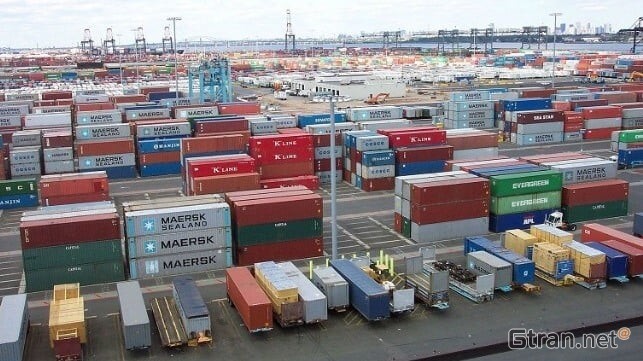Container import volumes at U.S. ports accelerated into the fall this year defying most expectations and historical peak season declines despite many reports of weak volumes and falling rates. The monthly data from logistics technology platform provider Descartes Systems Group points to surprising strengths while the National Retail Federation is warning that retail imports have likely peaked for 2023.

Descartes highlights that not only did volumes increase from September to October but imports also moved significantly ahead of October 2019 and are approaching levels that resulted in port congestion during the pandemic. Using customs filings, they report that total container imports were up 4.7 percent from September to October, which surpassed 2.3 million TEU for the month. That also put import volumes up nearly four percent from a year ago and more than 11 percent ahead of October 2019.
October the report says saw increases at six of the top 10 U.S. ports with overall volume growth for the year nearing the same as 2019’s pace. Despite the volume increases, they are also reporting that port transit times stabilized or retreated and even with the restrictions at the Panama Canal due to the worsening drought, it has had little impact on container import volumes in the U.S.
“The November update of the logistics metrics Descartes is tracking shows abnormal seasonal import patterns and signs that some of the key challenges to global supply chain performance in 2023 are improving, but others are not,” writes Chris Jones, Executive Vice President of Industry and Services for Descartes in the monthly update. “The last two months show an increase above pre-pandemic 2019 import levels, which are counter to the declines expected at the end of the year.”
The retail trade association, NRF, however, reports that its members already have most of their holiday season merchandise in the United States in warehouses and the supply chain. As such, in their Global Port Tracker report, the NRF foresees a “winding down for the year” for retail import volumes at the major U.S. ports. They expect the fourth quarter retail imports will be at 5.65 million TEU which will be down from the 5.9 million TEU during the third quarter of 2023. They however note that September was the first time retail imports reached two million TEU in a month since October 2022.
The NRF also projects that retail imports are starting on a pattern of exceeding year-ago levels after a 10-month pattern of lower retail imports in 2023. November, they believe, will be the first month since June 2022 when there was a year-over-year increase in volumes. Retail imports they project will be up nearly six percent this month versus a year ago and they foresee the year-over-year gains continuing into 2024. They forecast the gains at between nearly four percent for January 2024 and a peak of over 11 percent in February, which is traditionally a slow month with the Lunar New Year celebrations.
They are forecast that 2023 overall will be down 13.5 percent from last year and more than 14 percent from the record set in 2021. The NRF’s outlook for 2024 however shows a strong start of 5.32 million TEU for the first quarter up nearly seven percent from the 4.98 million TEU in the first quarter of 2023.
Like many analysts, the NRF points to the continued strength of U.S. consumer spending. The retail trade group is forecasting despite economic concerns that holiday retail sales will be up between three and four percent this year. With total retail sales this holiday season expected to top $957 billion, the NRF says sales are in line with the pre-pandemic holiday growth rate.


